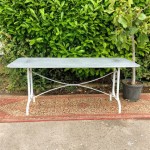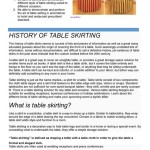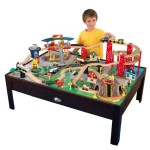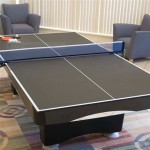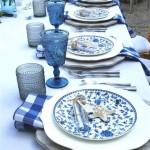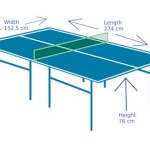Cover Carpet Under Dining Table: Practicality and Aesthetics
The placement of a dining table on a carpet introduces both aesthetic and practical considerations. A carpet can visually anchor the dining area, add warmth and texture to a room, and even contribute to sound absorption. However, the demands of a dining space, which include spilled food, dropped utensils, and frequent chair movement, can pose challenges for carpet maintenance and longevity. Consequently, careful consideration must be given to the type of carpet used, the choice of a protective cover, and regular maintenance routines.
The decision to cover a carpet underneath a dining table is multifaceted, influenced by personal preferences, lifestyle, and the specific characteristics of the carpet and dining space. There are distinct advantages and disadvantages associated with both covering and leaving the carpet uncovered. Examining these benefits and drawbacks will aid in making an informed choice aligned with individual needs and priorities.
Protecting the Carpet from Spills and Stains
One of the primary motivations for covering a carpet under a dining table is to protect it from spills and stains. Dining areas are naturally prone to accidents involving food and beverages, which can quickly damage or permanently discolor a carpet. Cleaning up spills immediately is crucial, but even prompt action may not prevent staining, especially with certain types of food and drinks such as red wine, coffee, or sauces. A cover, whether it be a rug placed on top of the existing carpet or a custom-made protector, provides a barrier against these potential hazards.
The type of cover used plays a significant role in its effectiveness. A low-pile, stain-resistant rug is a common choice, offering an additional layer of protection while also complementing the room's decor. Materials such as polypropylene or nylon are often favored for their durability and ease of cleaning. These synthetic fibers are less absorbent than natural fibers like wool or cotton, making them more resistant to staining. Alternatively, a clear vinyl or plastic runner can be used to shield the carpet without obscuring its design. While these options may not be as aesthetically pleasing, they offer a practical and inexpensive solution for stain prevention.
Another factor to consider is the size and placement of the cover. It should extend far enough beyond the edges of the dining table to accommodate chair movement. When chairs are pulled out, they should remain on the covered surface, preventing the chair legs from directly contacting and potentially damaging the uncovered carpet. This is particularly important on thicker, plush carpets that are more susceptible to compression and wear under the weight of furniture.
Regular cleaning of the cover is also essential. Spills should be addressed immediately to prevent them from soaking through to the underlying carpet. Depending on the material of the cover, cleaning methods may include spot cleaning with a mild detergent, vacuuming, or professional cleaning services. Maintaining a clean cover not only protects the carpet but also contributes to a healthier and more hygienic dining environment.
Considerations for Aesthetics and Room Design
While protection is a key concern, the aesthetic impact of covering a carpet under a dining table should not be overlooked. The choice of cover can either enhance or detract from the overall design of the room. The size, color, pattern, and texture of the cover should be carefully considered to complement the existing decor. A well-chosen cover can tie together the different elements of the room, creating a cohesive and visually appealing space.
Layering rugs is a technique often employed by interior designers to add depth and interest to a room. In this approach, a smaller rug is placed on top of a larger area rug, creating a focal point and defining the dining area. The smaller rug can be chosen in a contrasting color or pattern to create visual interest or in a complementary hue to maintain a harmonious look. When layering rugs, it is important to ensure that the rugs are of appropriate sizes and proportions. The top rug should be large enough to accommodate the dining table and chairs, while the bottom rug should provide a sufficient border to frame the dining area.
The texture of the cover is another important consideration. A plush, high-pile rug can add warmth and comfort to a dining area, while a low-pile rug offers a more streamlined and modern look. The texture should also be practical in terms of maintenance. A heavily textured rug may be more difficult to clean than a smooth, low-pile rug. The choice of texture will also impact how the dining chairs glide on the surface. A very thick or uneven texture may cause chairs to wobble or be difficult to move.
The color and pattern of the cover should be chosen to complement the color scheme of the room. Neutral colors such as beige, gray, or ivory are versatile and can work well in a variety of settings. Bold colors or patterns can add a pop of personality to the dining area, but they should be used sparingly to avoid overwhelming the space. Consider the color of the dining table and chairs, as well as the wall color and any other decorative elements in the room. The cover should create a sense of balance and harmony within the overall design.
Addressing Wear and Tear and Facilitating Maintenance
Beyond protecting against spills and stains, a cover can also help reduce wear and tear on the carpet caused by chair movement. The constant dragging and pushing of chairs can abrade the carpet fibers, leading to thinning and bald spots over time. A cover provides a buffer between the chairs and the carpet, distributing the weight and reducing friction. This is particularly important on high-traffic areas around the dining table.
The choice of material for the cover is crucial in addressing wear and tear. Durable materials such as polypropylene, nylon, or sisal are resistant to abrasion and can withstand heavy use. These materials are also less likely to shed fibers, which can contribute to dust and allergens in the air. Consider the weight and construction of the cover. A heavier, more tightly woven cover will provide greater protection against wear and tear than a lightweight, loosely woven cover.
From a maintenance perspective, a cover can simplify cleaning and prevent dirt and debris from becoming embedded in the carpet fibers. It is much easier to clean a removable cover than to clean an entire carpet. Regular vacuuming of the cover will remove loose dirt and debris, while spot cleaning can address spills and stains. Depending on the material, the cover may also be machine washable or require professional cleaning. This approach allows for easier cleaning, preventing permanent damage to the carpet underneath.
In addition to regular cleaning, it is also important to rotate the cover periodically to distribute wear evenly. This will prevent certain areas of the cover from becoming more worn than others. Consider using chair leg protectors or furniture glides to further reduce friction between the chairs and the cover. These small additions can significantly extend the lifespan of both the cover and the carpet underneath.
Ultimately, the decision of whether or not to cover a carpet under a dining table involves a careful balancing act between practicality and aesthetics. The level of protection required, the overall style of the room, and the ease of maintenance are all factors that should be weighed before making a decision. While a cover can provide numerous benefits, it is important to choose one that complements the space and meets the specific needs of the household. Regular maintenance and proper care will ensure that both the cover and the underlying carpet remain in good condition for years to come.

What Size Rug Under Dining Table Here S The Best Way To Find Righ

Should You Put A Rug Under Dining Table Furniturebox

Oriental Carpet Underneath A Dining Table Sin Or Style

Simple Rules For Dining Room Rugs Floorspace

10 Tips For Getting A Dining Room Rug Just Right

10 Tips For Getting A Dining Room Rug Just Right Houzz

Should You Put A Rug Under Dining Table Furniturebox

Paing Top Tip Plastic Mat For Under Dining Table Bluegraygal

Oriental Carpet Underneath A Dining Table Sin Or Style

Rugs Kids In The Dining Room To Be Or Not

